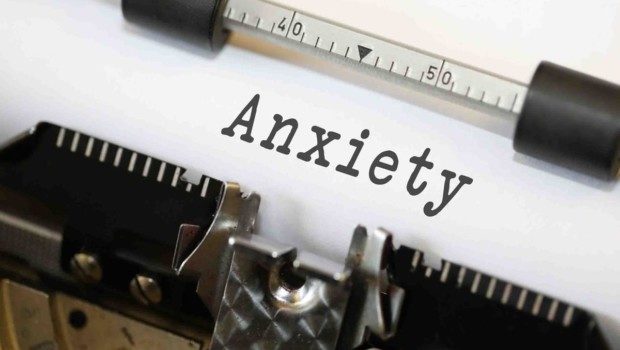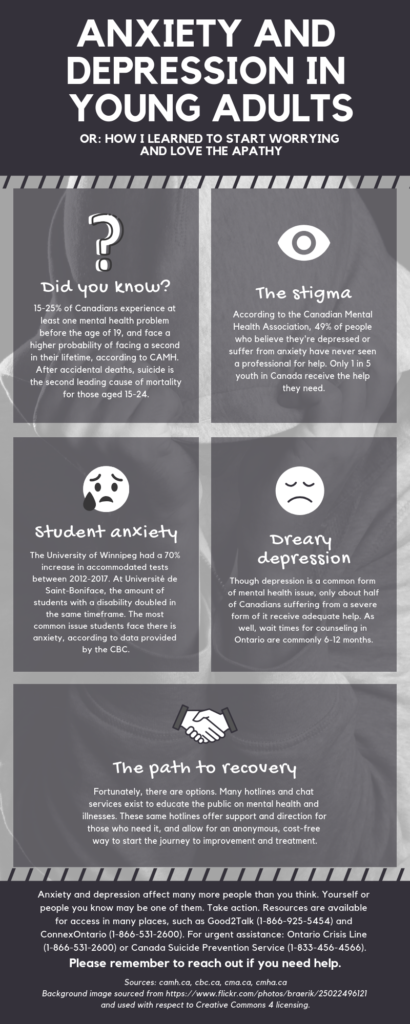


Written by Joey Chini and Brandon Burnett
Being a student is stressful. Between getting to class on time, keeping up with the readings, handing in assignments by the due date, studying for exams, taking exams, finding an internship, working a job, paying off debt, and finding time to socialize with friends–it can exact a toll on your mental well being. If you’re a student, you know what I’m talking about. I’m sure you can relate to at least one of those scenarios, and chances are you experienced feelings of anxiety while going through it.
Last week we gave you some tips on how to deal with alcoholism, and in the past we informed you about seasonal affective disorder. This time we’re going to educate you on how to deal with General Anxiety Disorder (GAD), the most common form of anxiety.
Roughly 11% of Canadians reported that they have a mood disorder, and according to CAMH’s website, “young people aged 15 to 24 are more likely to experience mental illness and/or substance use disorders than any other age group.” The leading cause of death among the same age group is suicide, which is linked to depression/anxiety. Canada also has the third highest suicide rate in the industrialized world.
These might seem like some daunting facts, but there is a silver lining: 80% of people who get help are able to get back to their lives.
GAD is treatable, and remission can be attained. The two main treatments, according to Statistics Canada, are medication and psychotherapy, which can be done by themselves or together. Medication options have drawbacks, such as addiction. Therapy includes finding ways to cope with one’s fears to suppress the onset of anxiety, and exposure to stimuli to help find the root of the problem. There’s no one-size-fits-all though, so it’s advised to see a medical professional.
Depression can be treated much the same way, with medications and counselling being at the forefront of the treatment cycle. However, the Canadian Mental Health Association does recommend self-help options to assist in the treatment process. Tips such as eating right, exercising, keeping a journal and even joining a self-help group are just a few of the things mentioned to keep you engaged and at your best.
If you feel like you or someone you know may be affected by a mood disorder such as anxiety or depression, please seek assistance. A visit to the family doctor is a good first step, but there’s also options for those who’d like to start more discreet.
Services such as ConnexOntario, Good2Talk, and the Toronto Distress Centre are all free, anonymous helplines that are open 24 hours a day, 7 days a week.

